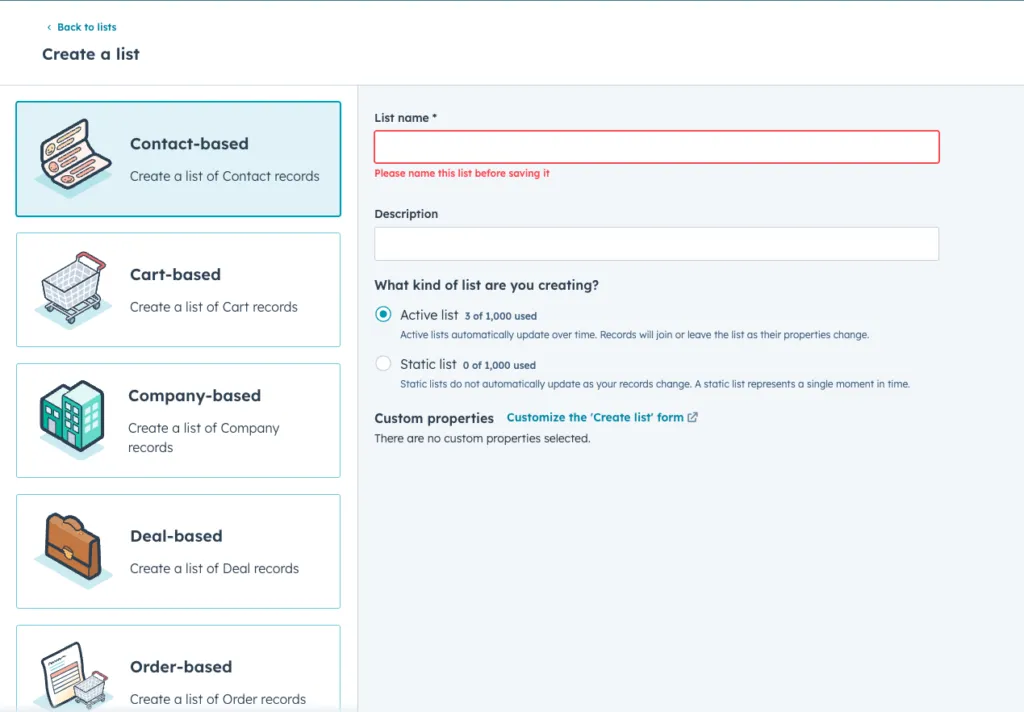7 Essential HubSpot Settings to Activate for Maximum ROI
Shawn Garrett
August 19, 2024

Aimers’ HubSpot partner Shawn Garrett explores 7 key settings that you must configure to get the most out of your HubSpot investment. Shawn shares invaluable insights that leverage HubSpot’s powerful tools. These settings will take you less than 2 hours to activate, and will empower your business to drive growth in an increasingly competitive digital environment.
You’ve invested in HubSpot, the powerhouse CRM, and now it’s time to turn that investment into gold. But where to start? Don’t worry, I’ve got you covered. Let’s dive into seven actionable ways you can start seeing ROI from your HubSpot investment in just the first week – all in under 120 minutes.
1. Set Up Your Dashboards – 15 Minutes
First things first, you need visibility. A well-set-up dashboard is like the cockpit of your airplane. It lets you see all the critical metrics at a glance. Spend 15 minutes customizing your dashboards to display key performance indicators (KPIs) like lead conversion rates, sales pipeline stages, and marketing email performance. Trust me, having these at your fingertips is a game-changer.
Why It Matters
Industry statistics indicate that businesses using data-driven marketing are six times more likely to be profitable year-over-year. When you can see all your critical data in one place, it allows you to make faster, smarter decisions. For instance, if you notice a dip in lead conversion rates, you can immediately drill down to see which part of the funnel needs attention. This proactive approach can significantly improve your ROI.
Pro Tip
Create multiple dashboards tailored to different roles in your company. Sales need a different view than marketing. Customize these dashboards so that each team can focus on the metrics that matter most to them. This tailored approach ensures everyone is aligned and working towards the same goals.
2. Automate Your Emails – 20 Minutes
Email marketing is still king, but manually sending emails? Not so much. Use HubSpot’s automation tools to create email sequences that nurture leads based on their behavior. In 20 minutes, you can set up a basic workflow that sends welcome emails, follows up with abandoned carts, or re-engages dormant leads.
Setting Up Your Workflow
Start by identifying your most common customer journeys. Are you welcoming new subscribers, following up with potential leads, or re-engaging past customers? Once you’ve identified these journeys, use HubSpot’s templates to create workflows. Customize the templates with your branding and messaging to make them feel personal.
Pro Tip
Segment your email list based on behavior and interests. According to HubSpot, companies that automate lead management see a 10% or more bump in revenue in 6–9 months. By targeting your emails more precisely, you can increase engagement and conversions. For example, a SaaS company might segment its list into trial users, active users, and churned users, each receiving tailored content to move them along the customer journey.
3. Segment Your Contacts – 15 Minutes

Your contacts are not one-size-fits-all. Segment them based on demographics, behavior, or stage in the buyer’s journey. Spend 15 minutes creating targeted lists to ensure your messaging is laser-focused and relevant.
Why Segmentation Works
Personalization is crucial. Salesforce reports that 84% of customers say being treated like a person, not a number, is essential to winning their business. Segmentation allows you to send the right message to the right person at the right time, increasing the likelihood of conversion.
Steps to Segment
- Demographics: Start with essential information like age, gender, and location.
- Behavior: Segment based on how they interact with your site and emails.
- Lifecycle Stage: Group your contacts by their stage in the buyer’s journey: new leads, marketing-qualified leads (MQLs), sales-qualified leads (SQLs), customers, and evangelists.
Pro Tip
Update your segments regularly to reflect changes in your contacts’ behavior and preferences. Use dynamic lists in HubSpot to automatically adjust based on the criteria you set. This ensures your messaging stays relevant and effective.
4. Integrate Your Tools – 10 Minutes

Got other tools you’re using? Integrate them with HubSpot. Whether it’s your social media scheduler, webinar platform, or e-commerce site, integrations save you time and bring all your data into one unified view.
Why Integration is Key
Integrated tools streamline your processes and enhance data accuracy, leading to better decision-making. For instance, integrating your e-commerce platform with HubSpot lets you see how marketing efforts directly impact sales. You can track the customer journey from the first touchpoint to purchase, providing invaluable insights into what works and what doesn’t.
Common Integrations
- Social Media: Sync your social media accounts to track performance and manage campaigns directly from HubSpot.
- Webinars: Integrate platforms like Zoom to log attendee data and follow up with targeted emails automatically.
- E-commerce: Connect your store to track customer purchases and segment them based on buying behavior.
Pro Tip
Review your integrations regularly to ensure they are working correctly and providing the data you need. Set up alerts in HubSpot to notify you of any issues so you can address them promptly.
5. Optimize Your Lead Scoring – 20 Minutes
Lead scoring helps prioritize your contacts based on their likelihood to convert. Spend 20 minutes tweaking your lead scoring model to reflect the behaviors and attributes that matter most to your business.
How to Score Leads
Lead scoring involves assigning points to various actions and characteristics of your leads. For example:
- Website Visits: Assign points for each visit to your key pages.
- Email Engagement: Points for opening emails and clicking links.
- Demographics: Higher points for leads that match your ideal customer profile.
Did You Know?
According to MarketingSherpa, companies that excel at lead scoring generate 50% more sales-ready leads at a 33% lower cost. By prioritizing high-scoring leads, your sales team can focus on the most promising prospects, increasing efficiency and conversion rates.
Pro Tip
Continuously refine your lead scoring criteria based on what leads to successful conversions. Regularly review and adjust your scoring model to reflect changes in customer behavior and market conditions.
6. Create a Content Calendar – 20 Minutes
Content is the backbone of inbound marketing. Spend 20 minutes drafting a content calendar that aligns with your marketing goals. Plan your blog posts, social media updates, and email campaigns to keep your strategy cohesive and consistent.
Why a Content Calendar?
A content calendar helps you stay organized and ensures a steady flow of content. It allows you to plan ahead, allocate resources efficiently, and maintain consistency in your messaging. This is crucial for building and maintaining audience engagement.
Steps to Create
- Identify Key Themes: What are the main topics you want to cover? Align these with your audience’s interests and pain points.
- Plan Frequency: Decide how often you’ll post on each channel. Consistency is more important than quantity.
- Allocate Resources: Assign responsibilities for content creation, editing, and publishing.
Engagement Tip
Ask yourself: What questions are my customers asking? Your content should answer those questions, establishing you as an authority in your niche. Use tools like HubSpot’s content strategy tool to identify popular topics and keywords.
Pro Tip
To cater to different audience preferences, include a mix of content types—blogs, videos, infographics, and social media posts. Use HubSpot’s analytics to track performance and adjust your strategy based on what works best.
7. Review and Refine – 20 Minutes
The beauty of HubSpot is its ability to provide detailed analytics. Spend the last 20 minutes of your day reviewing what’s working and what’s not. Use this time to make data-driven decisions and refine your strategy.
What to Review
- Email Campaigns: Open rates, click-through rates, and conversions.
- Landing Pages: Conversion rates and traffic sources.
- Lead Scoring: Review top-scoring leads and their outcomes.
Continuous Improvement
Set aside time each week to review your analytics and adjust your strategies. This iterative approach ensures you’re always improving and staying ahead of the competition.
Pro Tip
Create a feedback loop with your team. Encourage them to share insights and suggestions based on their experiences. This collaborative approach can lead to innovative ideas and better results.
Takeaways:
Getting the most out of HubSpot setup doesn’t have to be a marathon. By dedicating just 120 minutes, you can start seeing tangible ROI in your first week. Remember, it’s all about visibility, automation, segmentation, integration, optimization, planning, and constant refinement. Implement these strategies, and you’ll be well on your way to HubSpot mastery.
Final Thought
In the fast-paced world of SaaS, efficiency is vital. HubSpot is a powerful tool that, when leveraged correctly, can transform your business operations and significantly boost your ROI. So, what are you waiting for? Dive in and start optimizing!
Ready to see real results? Start implementing these tips today and watch your HubSpot investment pay off. For more in-depth strategies, follow Shawn on LinkedIn or schedule a call with him via this link: https://hubs.ly/Q02LslNz0
You can also hire Shawn as your HubSpot expert, and he’ll work synergistically alongside the Aimers’ team on your performance marketing goals. Drop a line to Aimers team here to discover more what Aimers and Shawn can do for your marketing.







.png)

